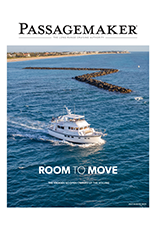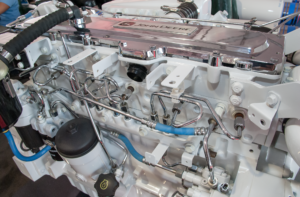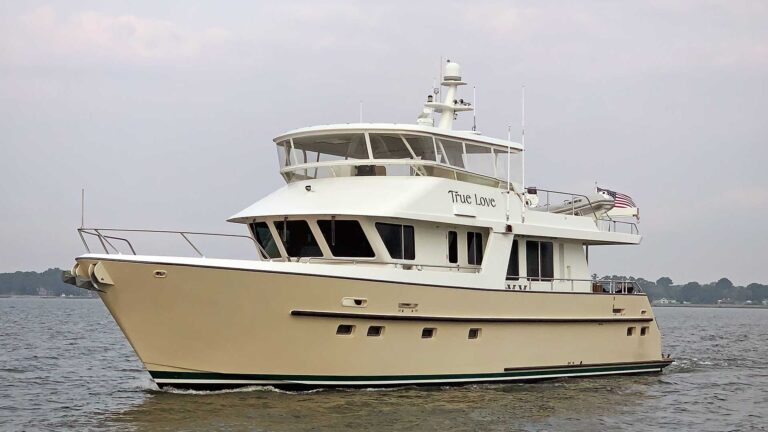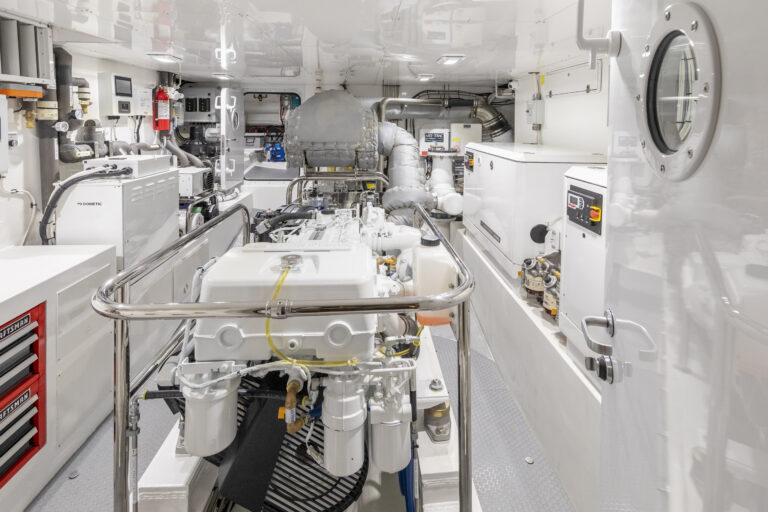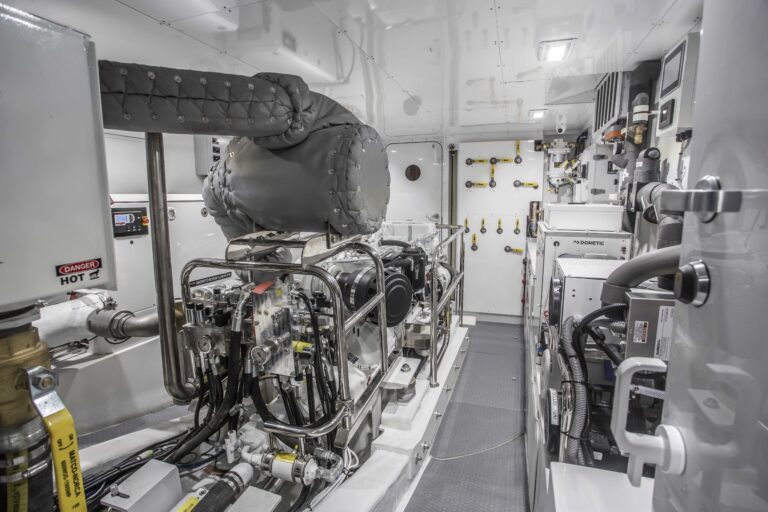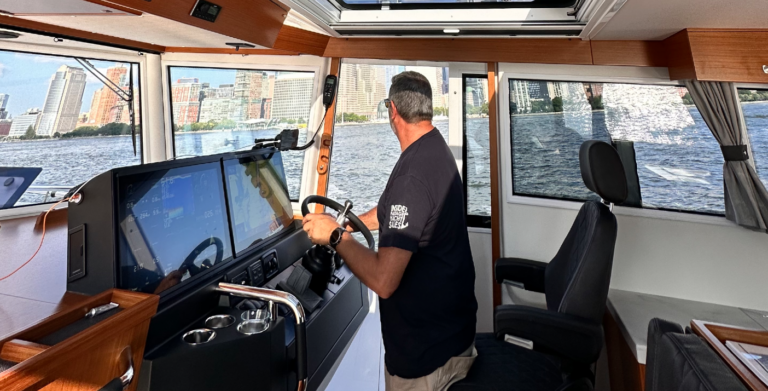
‘Dad!” shouted Rollo, our 20-year-old son, as he pointed at a thick, gray mass moving toward us over the water. “Is that a fog bank?”
We were aboard our Fleming 55, Play d’eau, anchored in Havre Gosselin, one of the halcyon bays off Sark in the Channel Islands. We’d just eaten lunch under clear skies and a scorching hot sun.
“Can’t be,” I said.
But it was. Within minutes, we were engulfed. The thick, wet, cold fog obliterated the other anchored boats in a gray soup. Visibility was zero. And we had to get back to base.
We packed up, turned on the radar and started creeping the long 8 nautical miles back to Beaucette Marina. Although the targets were few, it was harrowing avoiding them—so much so that once we got back safely, I signed up for a radar course, where I learned far more than I expected.
For starters, you have to set up your radar properly before you even leave shore. The four main considerations are screen orientation (head up, course up or north up), relative motion or true motion, relative vectors or true vectors, and sea-stabilized or ground-stabilized.
Let’s start with screen orientation. Head up means the display is fixed straight ahead, and as you change heading, the image turns with you. Course up has a compass reference, keeping the display aligned with your boat’s heading; if you change heading, the display turns with you (course up is just a more sophisticated version of head up). In north up—which our instructor recommends—the compass input keeps the display straight up regardless of any turns you make, making the data far easier to interpret. In addition, north up displays in the same orientation as your chart plotter, letting you match images and see other vessels as though they are on your chart.
Next comes relative or true motion. In good visibility, watching the motion of other vessels, relative to you, is called relative motion. Your radar’s electronic bearing line, or EBL, provides technology’s version of this act, telling you whether a vessel is on a constant relative bearing. If it’s closing on the radar screen, you’ll know there’s a risk of collision, just as if you were watching the boat’s motion with your eyes. By contrast, true motion is where the land remains static and vessels, including your own, move around the screen. There are benefits to using true motion, but for most boaters, a relative motion setting works better.
Relative vectors are also preferable to true vectors when using radar. A vector is the small arrow pointing ahead of the target on the screen. When you’re using relative vectors, if the arrow points to the center of the screen (your boat), it’s indicating a potential risk of collision. A true vector, on the other hand, indicates the direction the target is pointing but without indicating collision risk. So, keep the setting on relative vectors most of the time.
You also need to determine whether your radar is sea- or ground-stabilized. To be sea-stabilized, your radar needs two key inputs: speed through the water, usually taken from your boat’s paddlewheel log, and boat heading, usually taken from a fluxgate or satellite compass. By contrast, if your radar uses GPS speed over ground and course over ground, it’s ground-stabilized.

And here’s the issue: Given the effects of tide and wind, your speed through the water can differ significantly from speed over ground, and boat heading can differ significantly from course over ground. These differences amplify the slower you cruise, and the stronger the tide and wind. When that happens, the direction the other vessel is pointing—shown by its true vector—can become inaccurate (see Figure 1). That’s why the International Maritime Organization and other leading safety-at-sea bodies all recommend sea stabilization for collision avoidance.
With radar properly set up, you’ll be able to determine the risk of collision, and at that point, it’s equally important to know what action to take.
A lot of what you should do depends on the International Regulations for Preventing Collisions at Sea, or Colregs. According to Colregs Rule 19, which deals with restricted visibility for vessels not in sight of one another (such as in fog), there is no stand-on vessel. Instead, the onus falls on both vessels to take avoiding action in ample time. Any alteration of course or speed should be large enough to be readily apparent to another vessel. A succession of small alterations should be avoided.

If you’re going to alter course (see Figure 2), you must avoid altering course to port for a vessel forward of the beam, or an alteration of course toward a vessel abeam or abaft the beam. This doesn’t apply when overtaking a vessel.
You also need to think about sound signals. Colregs Rule 35 defines the sound signals you make in restricted visibility.
Use of an automatic horn controller here will enable you to better concentrate on the radar targets.
CHECK FOR SEA STABILIZATION
If you don’t know which data sources feed your radar and you have MARPA, the following test will give you an answer.

On a day when there’s zero wind, choose somewhere where you know what the tide’s doing. Find a fixed object, such as a buoy. Stop the boat and become stationary in the water. Locate the buoy on the radar and choose a range scale to fit. Select the buoy as a MARPA target, and wait.
If MARPA shows the buoy moving at the speed of the tide, but in the opposite direction from the tide, then your radar is sea-stabilized. If the buoy is stationary and the radar has an apparent speed for your vessel, then your radar is ground-stabilized.
Now, if this test tells you that your radar is ground-stabilized, MARPA will be misleading and should only be used as an aid, not as the gospel truth. Errors will increase if you’re cruising slowly, or if the tide or wind is strong.
